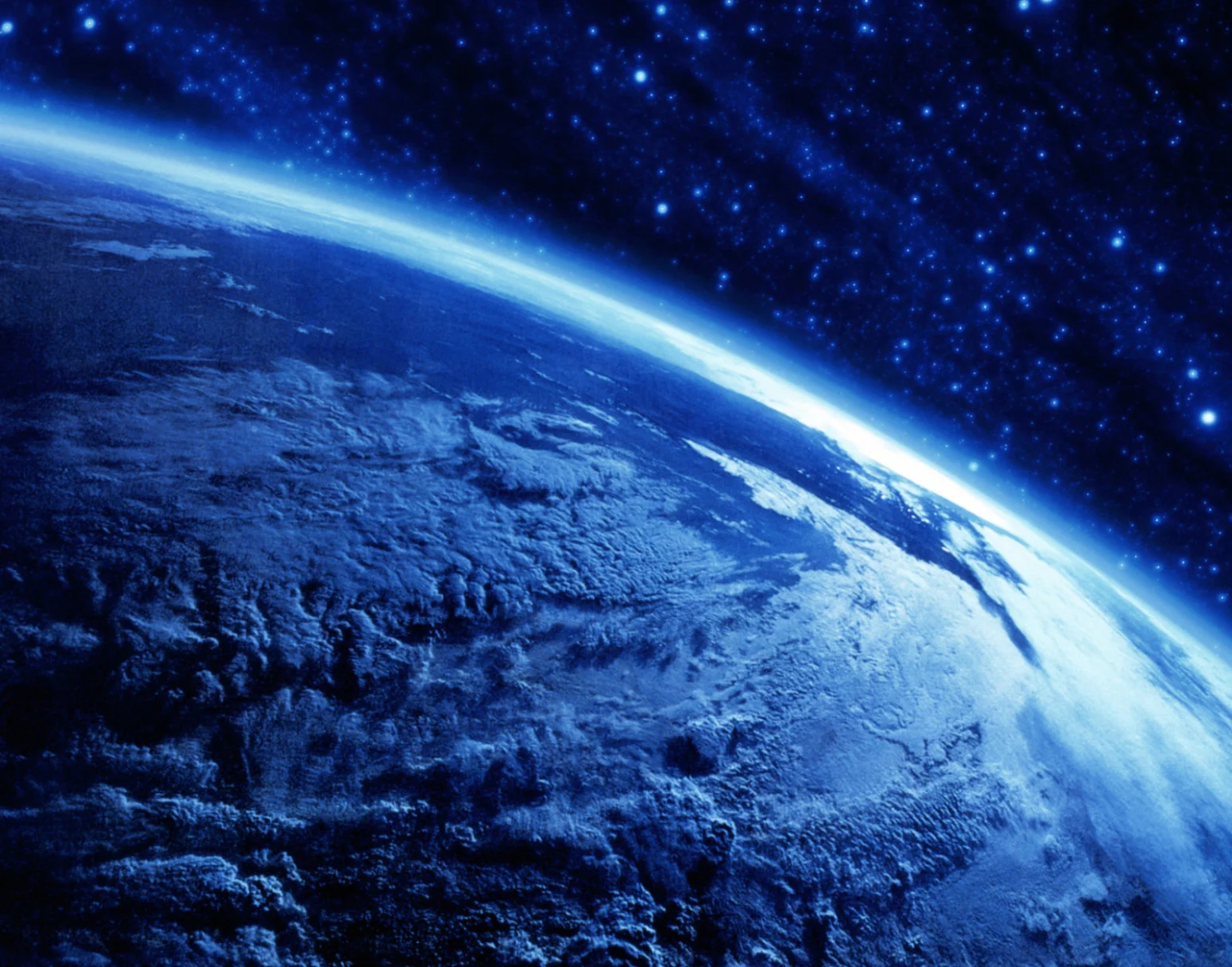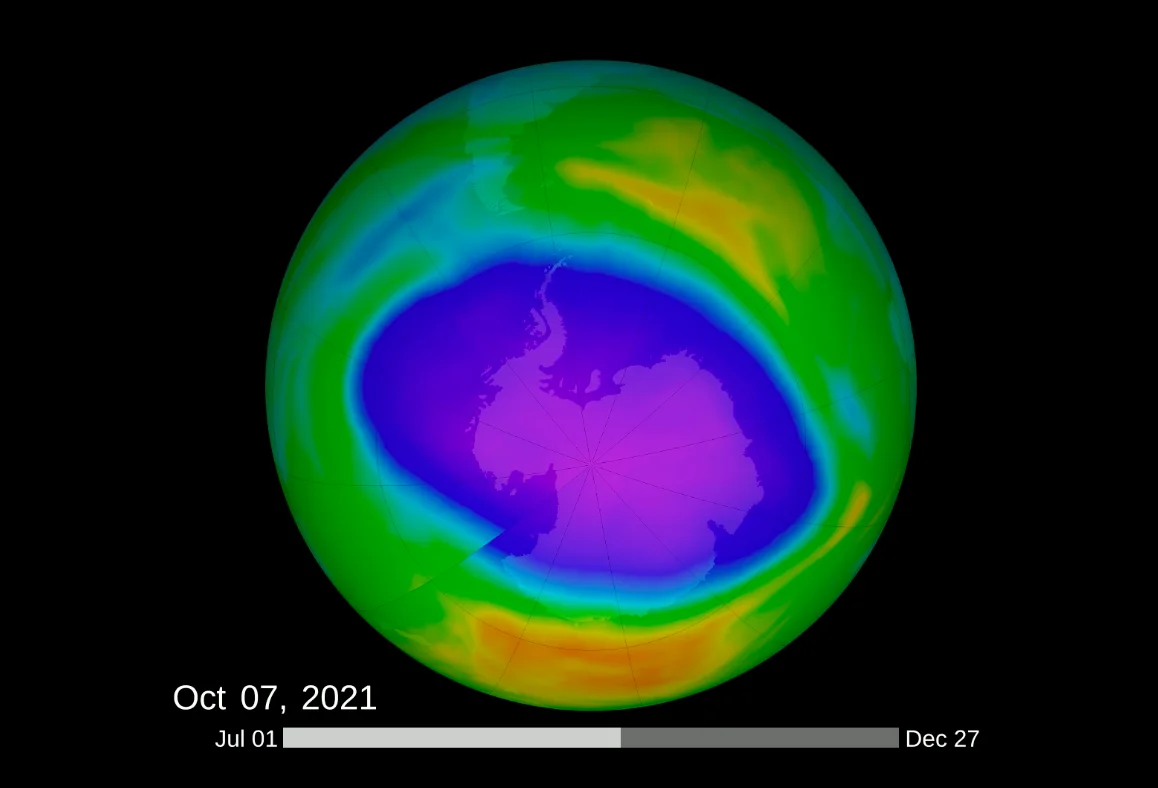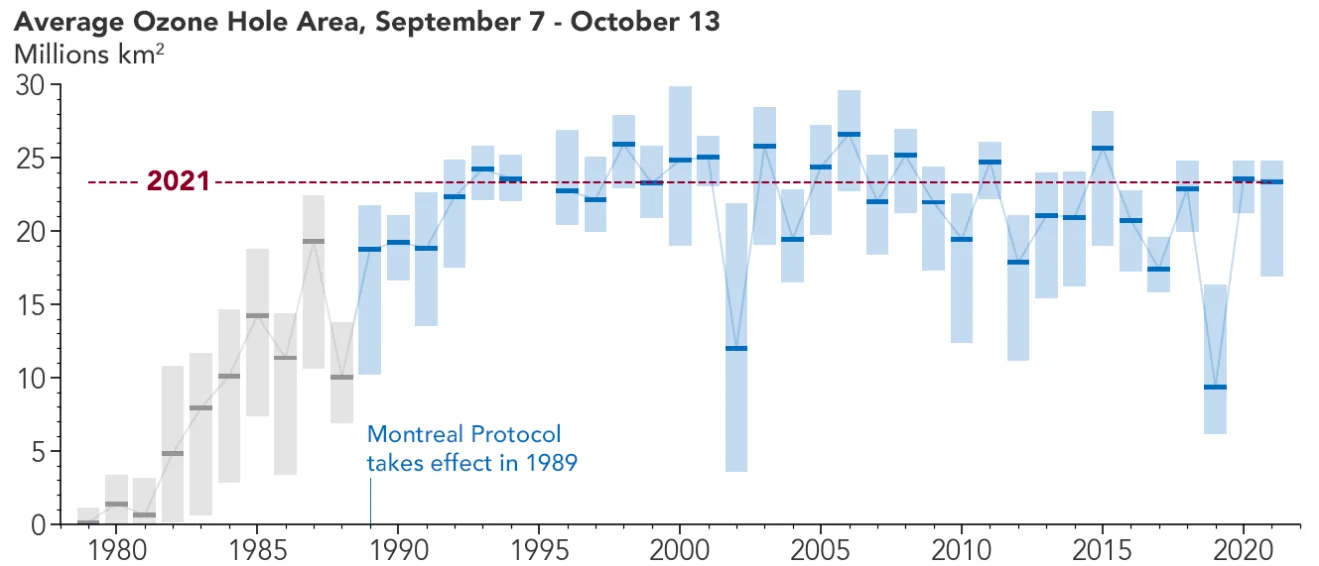
Ozone layer hole that was once larger than Antarctica has finally closed
The 2021 Antarctic ozone hole was one of the largest and longest-living since 1979.
Scientists from the Copernicus Atmosphere Monitoring Service (CAMS) are ending 2021 with an announcement worth celebrating: the 2021 Antarctic ozone hole has finally closed.
This ozone hole was once larger than Antarctica and reached its maximum size on October 7th. It is the 13th largest since 1979 and closed later than 95 per cent of all ozone holes that have been tracked since 1979, one year after the Montreal Protocol was signed.

The ozone hole over Antarctica at its peak on October 7, 2021. (NASA Ozone Watch)
The Montreal Protocol is often cited as one of the most successful political initiatives aimed at protecting the environment. The agreement, which is signed by 197 countries, regulates the production and use of dozens of human-created chemicals that are ozone-depleting substances (ODS) and bans particularly damaging chemicals called chlorofluorocarbons (CFCs).
CFCs were gases used in refrigerators and aerosol sprays in the 1960s and 70s before scientists discovered they were linked to a thinning region in the ozone layer over Antarctica.
A thinning ozone layer allows more UV rays from the Sun to flow through Earth’s stratosphere, which can be a dangerous risk to human health. The U.N. estimates that the Montreal Protocol has prevented millions of additional cases of melanoma, other cancers, and eye cataracts.
Scientists estimate that the ozone layer could recover by mid-century, but there are still areas in the ozone layer that are thinning and holes that have struggled to close. However, scientists have stated that certain conditions and patterns within the Earth’s atmosphere have contributed to some thinner regions and holes in the ozone layer, such as the one that recently closed over Antarctica.
“This [was] a large ozone hole because of the colder than average 2021 stratospheric conditions, and without a Montreal Protocol, it would have been much larger,” stated Paul Newman, chief scientist for Earth sciences at NASA’s Goddard Space Flight Center, in an article published by NASA.

Many ozone holes in the 1990s and early 2000s were significantly larger than the 2021 ozone hole in terms of average ozone hole area from early September to mid-October. (NASA’s Earth Observatory/ Joshua Stevens)
The Southern Hemisphere experienced an abnormally cold winter, with Antarctica seeing a record-breaking average temperature of -60.9°C from April through September, and strong persistent winds in the stratosphere, which led to a deep and larger-than-average ozone hole.
NASA stated that even though the 2021 Antarctic ozone hole was larger than average, it was “substantially smaller” than those recorded in the late 1990s and early 200s.
“If atmospheric chlorine levels from CFCs were as high today as they were in the early 2000s, this year’s ozone hole would have been larger by about 1.5 million square miles (about four million square kilometres) under the same weather conditions,” NASA stated.
Thumbnail credit: Adastra/ The Image Bank/ Getty Images







